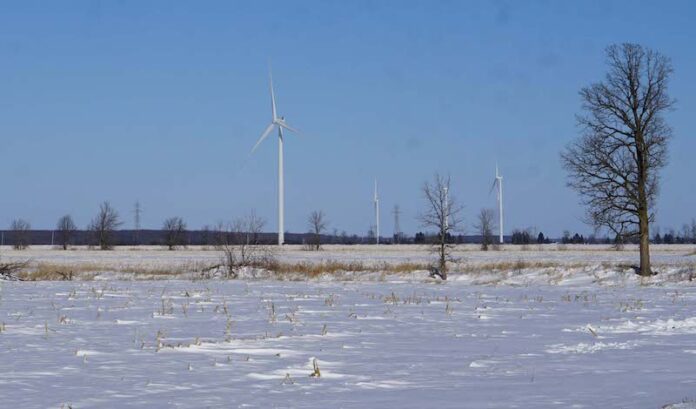by Philip Fry
The Provincial Government has stitched many of the threads that bind the three layers of our landscape quilt together. Complementing our access to fossil fuels, some of these threads form a grid to generate and distribute the electricity we need to power numerous devices we use in our daily lives and make our landscape lively, vibrant, and productive. Now, because we must make a significant reduction in our use of fossil fuels, our dependency on electricity – for heating, for our cars, for our tractors – will grow far beyond today’s requirements, and we must rely on renewable sources. It is beyond my abilities to sort out the entanglements involved in this transition, and none of us should be required to be an investigative journalist to discover what is going on and what needs to be done. But let me nonetheless explain the situation as I see it.
With hindsight, it is clear that the Clean Energy Act passed by the previous (Liberal) government in 2009 was laudably aimed at reducing our dependency on fossil fuels, and it did indeed manage to eliminate reliance on highly polluting coal generation. But, apparently against expert advice, it steamed ahead with a rapid introduction of solar and wind facilities, offering very attractive contracts to prospective producers of “green” energy. The problem was that, with rapidly advancing technology, the cost of installing ground mounted solar facilities, and to a lesser extent wind turbines, soon decreased. From 2009 to 2010, the cost of ground mounted solar installations plunged by 30%, making the rushed contracts very expensive compared to conventional generation. Debt piled up, the public was outraged, and “green” energy got a bad reputation.
Our current (Conservative) government was elected promising to clean up “the mess” and to reduce electricity rates by 12%. That, we now know as we pay an increase of 3 to 4%, did not happen. The Green Energy Act was repealed, and 758 renewable energy contracts (including what Premier Ford called “terrible, terrible, wind turbines”) were cancelled at a cost of $231 million taxpayer dollars. Meanwhile, the cost of subsidies to consumers is rising; it now represents about 33% of the total cost of electricity. (We are looking at sums from around $6 to $9 billion now, and up to $228 billion in 2045, if things don’t change. Gulp!) Turning back to a mix of conventional generation – including highly contentious nuclear plants – has not helped us, and the drive towards renewable green energy has been thwarted.
Here is an example of our problem. In December, 2019, echoing Premier Ford’s declaration: “If we could get rid of all the wind mills, we would,” the government cancelled the $200-million Nation Rise Wind Farm near Chrysler and Finch. The project, planned for 29 turbines, was already well under way, and there had been complaints about possible “visual disruption,” noise, and negative impacts on health and the watershed. It was the Minister of the Environment, claiming his right to “confirm, alter, or revoke” a decision of the Environmental Review Board, who announced the decision to stop the project because it threatened local populations of Hoary, Big, and Little Brown bats (the latter on the Ontario Species at Risk list). The Superior Court squelched the decision because it did not “meet requirements of transparency, justification, and intelligibility.” The issue was not the bats, it was the government’s political agenda.
As we enter this period of necessary transition to clean electric power with a significantly higher demand for its use, it is clear that we need trust and transparency. But the behaviour of both of the governments guiding the management of electricity during the last decade suggests that we must turn to scientific, economic, engineering, and conservation experts to find reassurance. Let us insist that panels of independent experts be created on the provincial and local levels to advise governments and keep us informed in a clear and timely manner.
In the next instalment, I would like to consider ways to make green energy more friendly to our landscape. If you would like to enter this discussion, please contact me at wildflowerguy@gmail.com.





